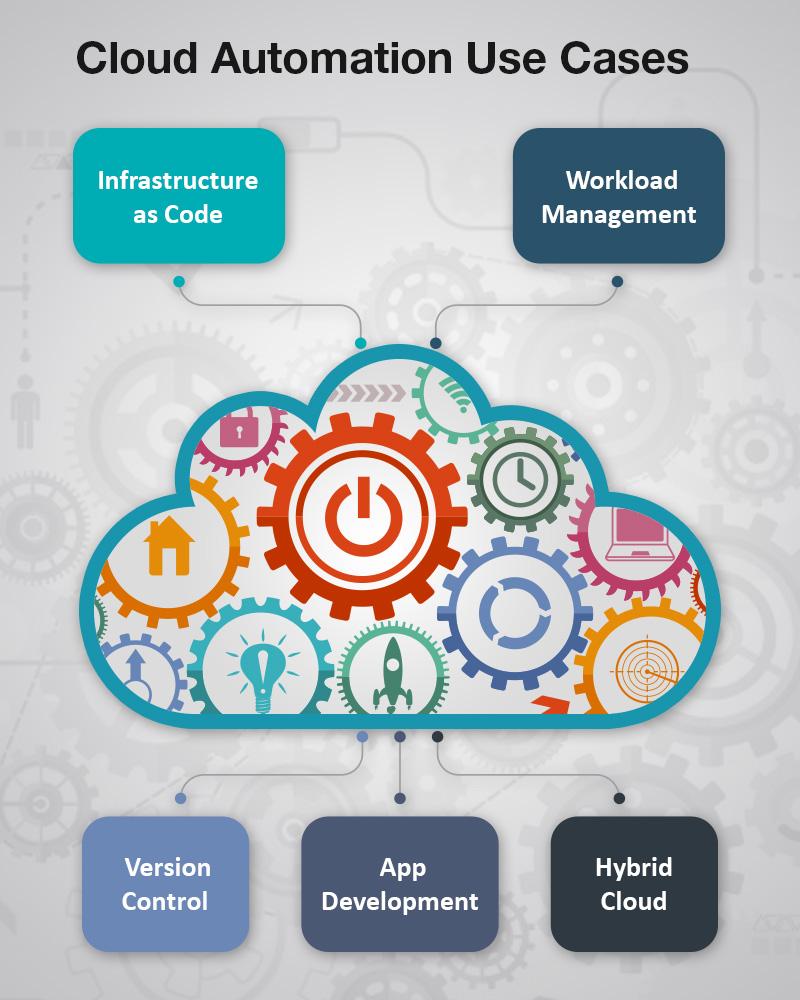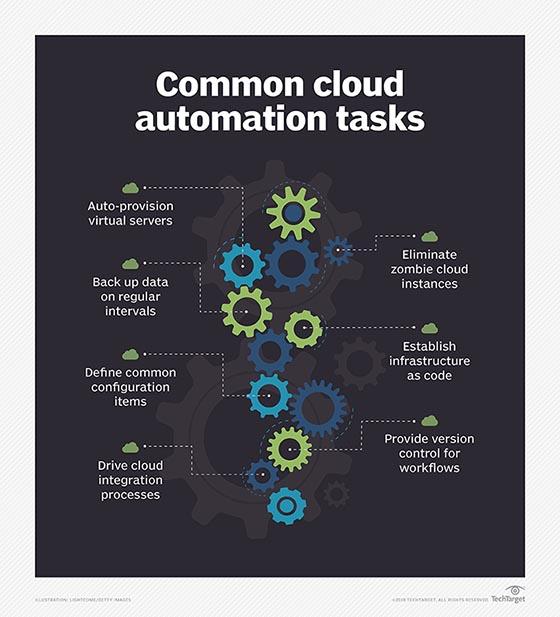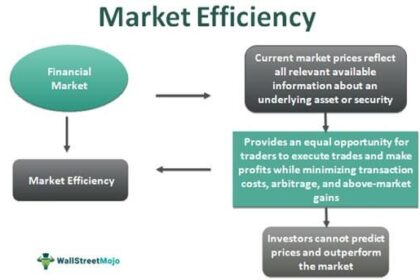In an era defined by rapid technological advancement and the relentless pursuit of efficiency, the landscape of business operations is undergoing a transformative shift. At the forefront of this evolution is cloud-based automation, a groundbreaking approach that harnesses the power of the cloud to streamline processes, enhance productivity, and facilitate collaboration across diverse platforms. As organizations increasingly turn to digital solutions to meet the demands of a fast-paced market, the rise of cloud-based automation is not merely a trend; it represents a fundamental change in how we conceive, manage, and execute work. This article explores the multifaceted benefits of embracing this innovative paradigm, shedding light on its implications for businesses and the workforce of the future, while equipping readers with insights into navigating this new digital landscape. Join us as we delve into the age of cloud-based automation and uncover the limitless possibilities that lie ahead.
Harnessing Efficiency Through Cloud-Based Automation Technologies
In today’s fast-paced digital landscape, businesses are increasingly turning to cloud-based automation technologies to streamline operations and enhance productivity. By leveraging the power of the cloud, organizations can automate repetitive tasks, reduce human error, and optimize workflows without the limitations of traditional IT infrastructures. This shift not only allows companies to focus on higher-level strategic initiatives but also provides them with the agility needed to adapt to the evolving market demands. Key benefits include:
- Scalability: Easily adjust resources based on fluctuating business needs.
- Cost Efficiencies: Reduce overhead associated with hardware and maintenance.
- Collaboration: Foster seamless communication and teamwork across geographies.
- Real-time Analytics: Gain insights quickly to inform decision-making processes.
As companies embrace automation, they can also benefit from advanced features such as artificial intelligence and machine learning, which enhance the capabilities of automation technologies. By integrating these technologies, businesses can unlock a new level of operational efficiency, allowing them to predict trends, personalize customer experiences, and maintain a competitive edge. A simple overview of how different industries are utilizing cloud-based automation is illustrated in the table below:
| Industry | Application | Impact |
|---|---|---|
| Retail | Inventory Management | Reduced Stockouts |
| Healthcare | Patient Onboarding | Improved Service Delivery |
| Manufacturing | Production Scheduling | Enhanced Operational Efficiency |
| Finance | Compliance Monitoring | Minimized Regulatory Risks |

Transforming Business Operations with Scalable Solutions
In today’s fast-paced business environment, organizations are increasingly recognizing the vital role that scalable solutions play in enhancing operational efficiency. Implementing cloud-based automation not only streamlines processes but also allows for greater flexibility in adapting to market demands. Adopting such solutions enables businesses to focus on core competencies while delegating routine tasks to automated tools. The benefits include:
- Cost-effectiveness: Reducing overhead by minimizing manual labor.
- Improved accuracy: Decreasing human error through consistent automated processes.
- Enhanced collaboration: Facilitating seamless communication across teams with integrated platforms.
The transition to cloud-based automation ushers in a new era of scalability, empowering businesses to grow without being hampered by traditional constraints. Through real-time data analytics, companies can make informed decisions swiftly and adaptively. Moreover, automated solutions can easily scale up or down to meet fluctuating demands, ensuring that resources are utilized optimally. Below is a concise overview of key advantages:
| Advantage | Description |
|---|---|
| Business Agility | Quickly adapt to changing market conditions. |
| Data-Driven Decisions | Leverage insights from collected data to inform strategies. |
| User Empowerment | Encourage employees to focus on innovative tasks. |

Mitigating Risks and Enhancing Security in Cloud Automation
As organizations swiftly adopt cloud automation, it’s essential to recognize and proactively address the accompanying risks. Security breaches, data loss, and unauthorized access remain major concerns in this evolving landscape. To effectively mitigate these risks, businesses should consider implementing multi-layered security protocols that include:
- Encryption of sensitive data both in transit and at rest
- Identity and Access Management (IAM) to enforce user permissions
- Regular security audits and compliance checks
- Automated threat detection systems to monitor activities
In addition, promoting a culture of security awareness among employees can greatly enhance defenses. Establishing clear communication about potential threats and best practices ensures that all team members stay vigilant. The adoption of DevSecOps practices integrates security into the development lifecycle, allowing for quicker responses to vulnerabilities. Organizations might also consider utilizing a robust incident response plan to outline defined steps in the event of a security breach:
| Step | Description |
|---|---|
| 1. Preparation | Establish protocols and train the team. |
| 2. Detection | Identify and assess security incidents. |
| 3. Containment | Limit the damage from the breach. |
| 4. Eradication | Remove the threat from the environment. |
| 5. Recovery | Restore systems and ensure their security. |

Future-Proofing Your Organization with Strategic Cloud Integration
As organizations navigate the complexities of digital transformation, the integration of cloud technologies emerges as a pivotal strategy for maintaining competitive advantage. By embedding cloud-based solutions into operational frameworks, businesses can enhance their agility and responsiveness. This transition not only streamlines processes but also compels organizations to rethink their service delivery models. Key aspects that contribute to successful cloud integration include:
- Scalability: The ability to expand resources seamlessly in response to fluctuating demand.
- Interoperability: Ensuring diverse applications and platforms can work cohesively within cloud environments.
- Data Security: Prioritizing robust security measures to protect sensitive information against cyber threats.
Moreover, a well-planned cloud integration strategy fosters a culture of innovation. By leveraging automation and real-time data analytics, organizations can proactively identify trends and adapt their strategies accordingly. This forward-thinking approach enables them to respond to market changes swiftly. Consider the following key benefits of cloud integration:
| Benefit | Description |
|---|---|
| Cost Efficiency | Reduces IT overhead with pay-as-you-go models. |
| Enhanced Collaboration | Facilitates teamwork through accessible shared resources. |
| Business Continuity | Ensures data recovery and uptime even in crises. |
Wrapping Up
As we stand at the precipice of a new era, the ascent of cloud-based automation invites businesses and individuals alike to reimagine the way we operate. No longer tethered to the limitations of traditional infrastructures, we are empowered to harness the boundless potential of the cloud to streamline processes, enhance collaboration, and drive innovation. This transformative shift is not merely a trend; it signifies a fundamental change in our relationship with technology.
By embracing these advancements, we unlock opportunities previously deemed unattainable, allowing us to focus on creativity and strategy rather than mundane tasks. As we navigate the complexities of this digital landscape, it is essential to remain adaptable and open to learning—key ingredients that will help us thrive amidst the rapid evolution of automation.
The future is not just coming; it is already here, waiting for us to take the next step. By integrating cloud-based solutions into our daily practices, we are not just optimizing efficiency; we are redefining what is possible. So let us step forward, equipped with the tools of innovation, ready to shape a landscape where technology enhances our human experience rather than overshadows it. The journey may be uncertain, but one truth remains clear: the sky is not the limit; it’s just the beginning.



